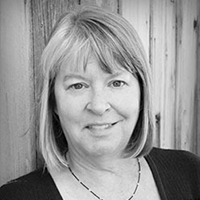Question
What is the source-filter theory of speech production?
Answer
The source-filter (or acoustic) theory of speech production is an explanation of the two-stage process of creating speech sounds. For voiced phonemes (vowels, liquids, nasals, and glides), the source is the complex glottal tone produced by the vibration of the vocal folds. The vocal tract, which consists of the throat, mouth, and nose, filters or shapes the tone produced by the vocal folds into speech sounds. The vocal tract filter allows some frequencies of that multi-frequency glottal tone pass through to the outside air and reduces the intensity of other frequencies. When you change the shape of your vocal tract by moving your tongue, lips, and jaw, you change the frequencies that pass through or are filtered out. For fricative, stop, and affricate consonants, the source created by turbulent airflow at the site of vocal tract constriction is also filtered by the vocal tract.
The source-filter theory is important for understanding differences among vowel sounds. Different vocal tract shapes result in different patterns of formant frequencies, the bands of acoustic energy that we use to perceive vowel phonemes. For example, the vowel /i/ as in “heat” is produced with the tongue positioned high (close to the roof of the mouth) and relatively forward in the mouth. It has a low-frequency first formant, around 300 Hz, and a high-frequency second formant, around 2500 Hz. If you keep your tongue high in position but move it back toward the soft palate to produce the vowel /u/ as in “hoot,” the first formant remains low (300 Hz), and the second formant moves lower in frequency (around 900 Hz). Changes in the shape of the vocal tract result in changes in the patterns of acoustic energy that pass through the mouth, and those acoustic patterns are perceived by listeners as different vowel sounds.
It's important for clinicians to understand the source-filter theory because it can provide the foundation for differential diagnosis of speech disorders and differences. You can think about whether the source or the filter or both components of speech are affected, and that knowledge can guide assessment and treatment considerations. For someone with a hoarse voice whose consonants and vowels are clearly produced, the source component is involved, so you choose assessment techniques that elucidate the function of the larynx and respiratory system. When you hear imprecise consonants accompanied by normal voice quality, you select articulation as your treatment target because the filter is affected. Sometimes speech disorders are complex, especially those associated with neurogenic disorders because several speech systems are affected. The source-filter theory can help you sort out which deficits – those related to producing the laryngeal tone and those responsible for shaping the tone into speech sounds – contribute the most to speech intelligibility. For example, people with hypokinetic dysarthria related to Parkinson's disease can have low-intensity and breathy voice quality, restricted range of pitch and loudness, and distorted consonants. Because both source and filter components of speech are involved, you should consider treatments that address both phonation and articulation, such as loud speech or clear speech.
This Ask the Expert is an excerpt from the course, 20Q: Using Speech Science in Clinical Practice, authored by Amy T. Neel, PhD, CCC-SLP.

